People
‘A Master of the Gestural Brushstroke’: Admirers Reflect on the Legacy of Ed Clark, the Late Innovator of Abstract Painting
An exhibition of the late artist’s work is on view now at Hauser and Wirth in New York.
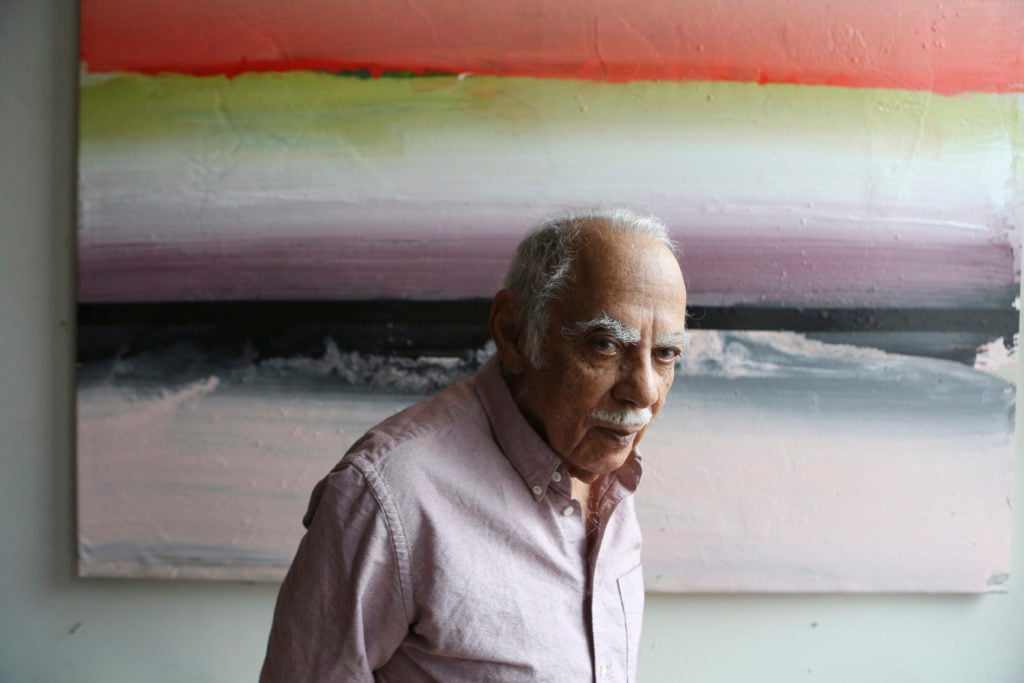
An exhibition of the late artist’s work is on view now at Hauser and Wirth in New York.

Taylor Dafoe

Ed Clark, a painter and innovator of the post-war abstract art movement, has died at age 93.
Clark was a fixture in the New York art scene of the 1950s, frequenting the Cedar Tavern alongside peers like Mark Rothko and Willem de Kooning. Though his career didn’t yield the same level of market success in the decades following the downtown New York painting boom, Clark’s work has sparked renewed interest from critics and collectors alike in recent years.
“We join Ed Clark’s family in grieving the loss of this remarkable artist, while feeling deeply grateful for his very long life filled with inspiration, invention, and love,” said a statement from Marc Payot, partner and vice president of Hauser and Wirth, which represents the artist worldwide and currently has an exhibition of his work on view in Chelsea. “We feel privileged to have been able to open, during Mr. Clark’s lifetime, an exhibition of his most recent paintings. And we look forward to continuing the work of introducing Ed Clark to new generations and ever broader audiences around the world, exploring his powerful vision and radically original art in the context of history and contemporary culture.”
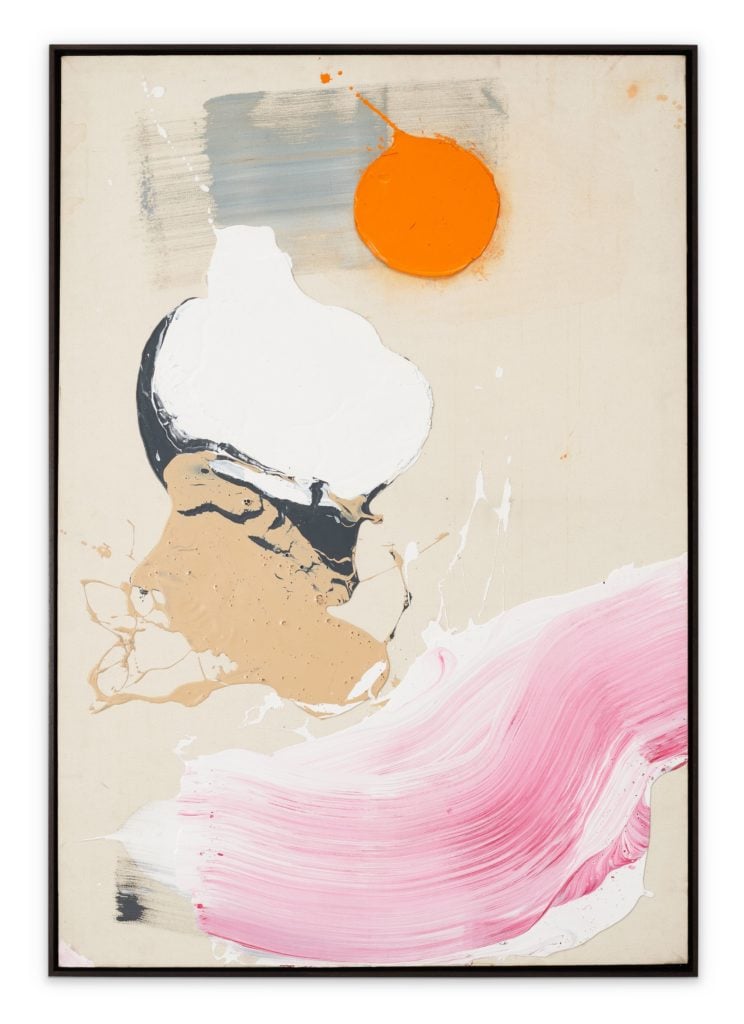
Ed Clark, Untitled (2013). Photo: Thomas Barratt, © Ed Clark, courtesy of Hauser & Wirth.
Clark was born in 1926 in New Orleans and raised in Baton Rouge and then Chicago. After a two-year stint in the Army Air Forces, he enrolled at the Art Institute of Chicago through the GI Bill. He then moved to Paris to study at the Académie de la Grande Chaumière, where, alongside fellow African American expat artists such as Beauford Delaney and Herbert Gentry, his work transitioned from figuration to abstraction.
It was during this time that Clark also turned to a push broom in order to spread large swathes of gradated paint on his canvases in a manner that conveyed speed—a technique he would employ for the rest of his career.
“Ed took the idea of using house painters’ brushes a step further with the janitor’s broom,” says Sukanya Rajaratnam, a partner at Mnuchin Gallery, which mounted a survey of Clark’s work in 2018. “Embracing the physicality of the entire body into painting, he turned a menial tool into an elevated object, while also perhaps bringing race into the equation in a subtle way.”
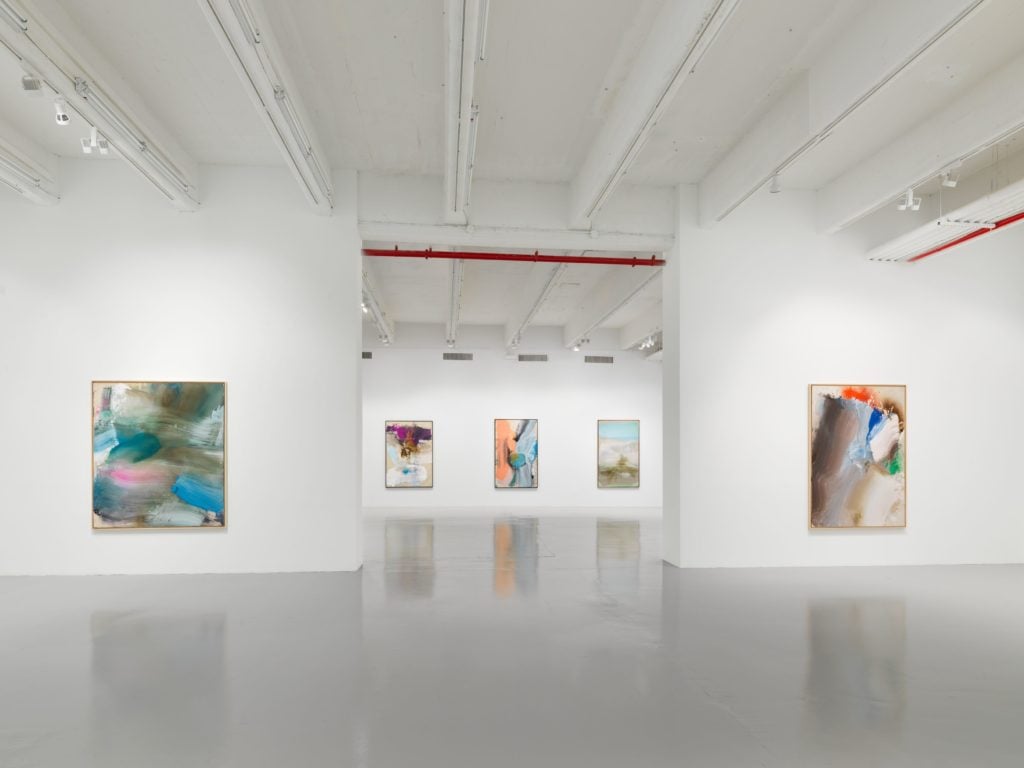
Installation view of “Ed Clark Paintings 2000 – 201” at Hauser & Wirth New York, 2019. Photo: Dan Bradica, © Ed Clark, courtesy of Hauser & Wirth.
Clark returned to New York in 1956 and found his place among the coterie of post-war painters in the 10th Street scene. In a group show in 1957, he introduced what is perhaps his most significant formal innovation: the shaped canvas. Though the minimalists of the successive generation would make regular use of the non-rectangular canvas, Clark is thought to be the first artist to introduce the idea.
“Ed Clark was a great painter—a restless innovator pushing the boundaries of abstraction, a master of the gestural brushstroke and a dazzling colorist,” says Nigel Freeman, director of African-American art at Swann Auction Galleries. “He broke through in the mid-1950s with collage, a broom, and dry pigment, painting like no one before. His contributions to postwar art are just now being acknowledged.”
Clark’s work remained in relative obscurity until a pair of retrospective exhibitions—at the N’Namdi Center for Contemporary Art in Detroit in 2011 and at the Art Institute of Chicago two years later—put it back on the map. Since then, Clark’s work has been the subject of several prominent shows, including the Mnuchin survey and a group exhibition curated by one of Clark’s most devout followers, David Hammons.
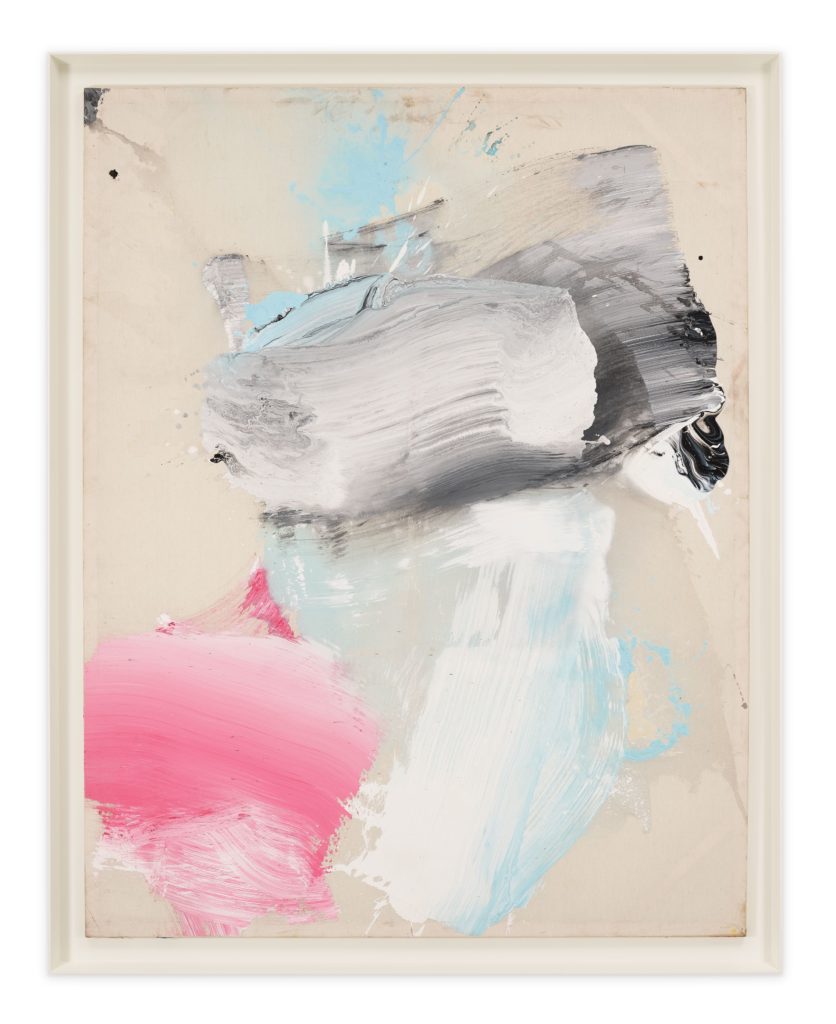
Ed Clark, Untitled (2006). Photo: Thomas Barratt, © Ed Clark, courtesy of Hauser & Wirth.
Clark’s ascent was cemented when he signed with Hauser & Wirth this past July. The show of his work on view now at the gallery brings together fifteen paintings created between 2000 and 2013. “One can only imagine the tenacity needed to hang on for so long, but you get a sense of how Clark’s obstinacy paired with an unyielding belief in his own art has served him well,” Charles Moore wrote of the show on artnet News earlier this month. “Overall, this collection of art radiates a sense of contentment, at this moment when his reputation has at last caught up to his achievement.”
“I remember having a painting by Ed in one of our viewing rooms alongside a de Kooning from the ’70s,” says Rajaratnam of Mnuchin Gallery. “Time and again, the most seasoned collectors would turn to the painting by Ed and ask me who it was by. I think to a lot of artists working today, it might actually look fresher, embodying more chances.”
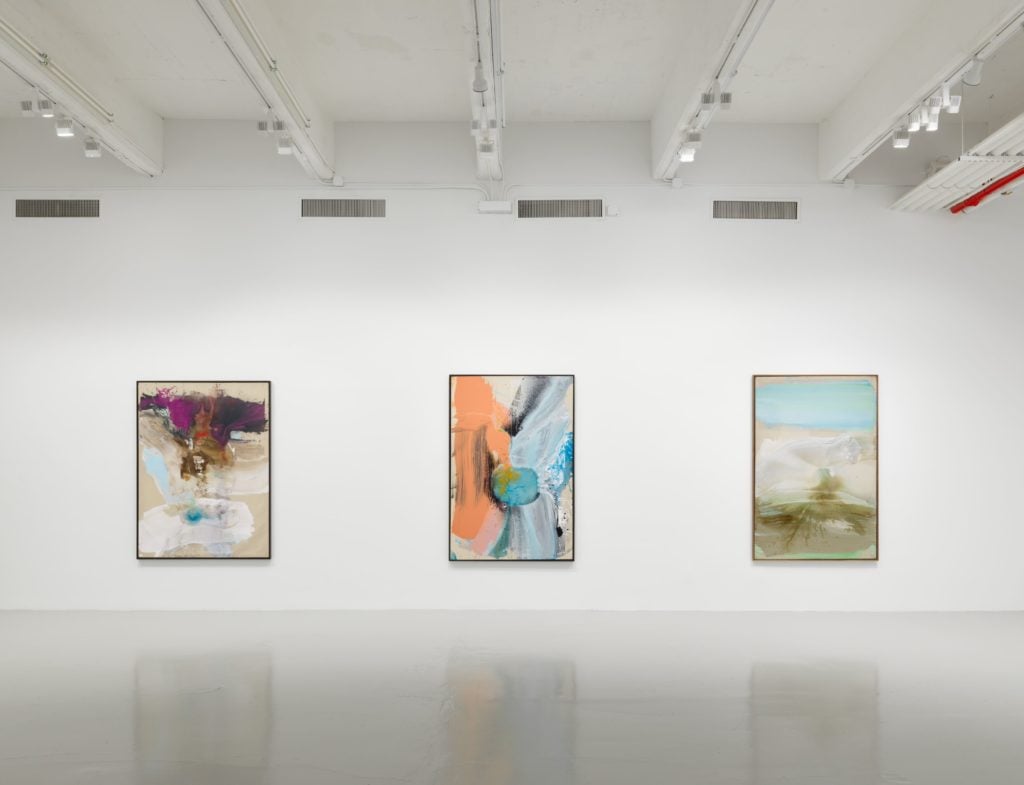
Installation view of “Ed Clark Paintings 2000 – 2013” at Hauser & Wirth New York, 2019. Photo: Dan Bradica, © Ed Clark, courtesy of Hauser & Wirth.
“Ed Clark” is on view at Hauser & Wirth, 22nd Street, New York, through October 26, 2019.